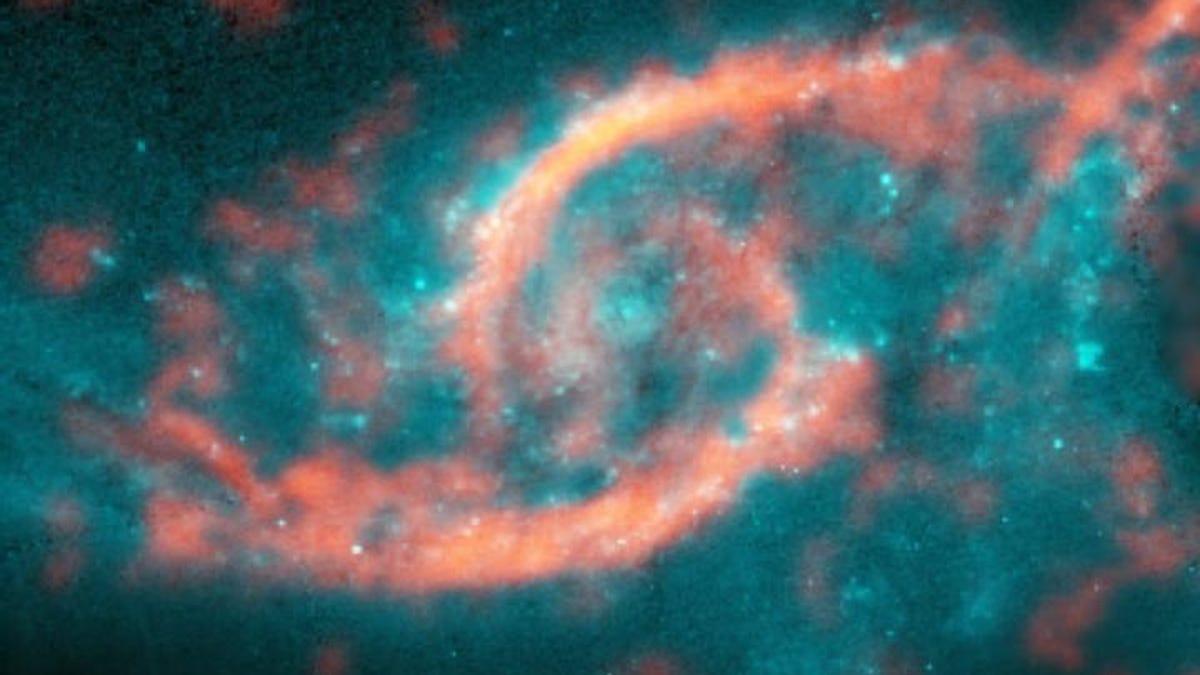Tsunami of stars and gas keeps an 'eye' on the universe
When two galaxies slammed into each other, they sent stars and gases swirling, forming this entrancing "eye."

When galaxy IC 2163 collided with galaxy NGC 2207 (a portion of its spiral arm is shown on right side of image), the huge wave of stars and gas created this galactic eye.
Sometimes it's tough to see the beauty of the forest for the trees. Or, in the case of this gorgeous image, to see the spectacular galactic "eye" for the individual stars and interstellar gas.
If you were standing anywhere on a planet in galaxy IC 2163 shown above, you'd be much too close to appreciate the view that the Atacama Large Millimeter/submillimeter Array (ALMA) captured.
That's just one reason it's better to be here than there. ("There" is 114 million light-years from Earth.) This "eye" was formed by a tsunami of stars and gas set in motion by galaxy IC 2163's glancing collision with galaxy NGC 2207, an event that probably created all kinds of chaos in that section of the universe.
"Although galaxy collisions of this type are not uncommon, only a few galaxies with eye-like, or ocular, structures are known to exist," said astronomer Michele Kaufman in a release. Kaufman is the lead author of a study about the find published Friday in the Astrophysical Journal. "Galactic eyelids last only a few tens of millions of years, which is incredibly brief in the lifespan of a galaxy."
Yes, that does mean that, galactically speaking, you don't want to blink in the face of this stunning eye, or you just might miss it.
You can see a wider view of the actual collision below. Both images were created by using ALMA to capture the motion of gases as shown by imaging carbon monoxide in orange and then overlaying those observations on a picture of the blue galaxies captured by the Hubble Space Telescope.
Galaxies IC 2163 (left) and NGC 2207 (right) recently grazed past each other, triggering a tsunami of stars and gas in IC 2163 and producing the dazzling eyelid-like features there.

